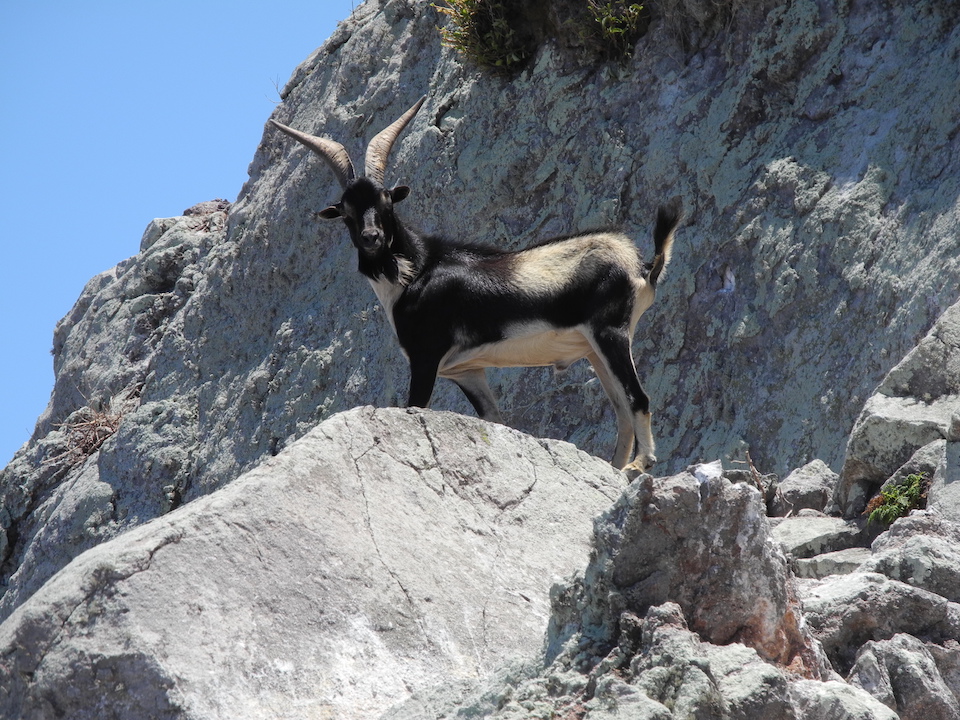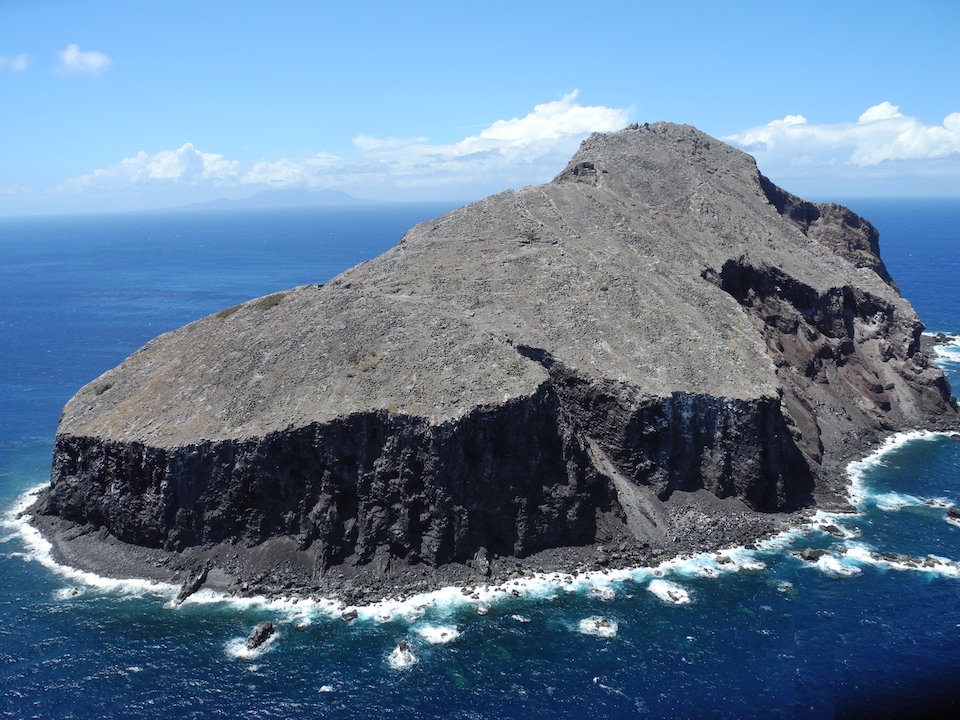One of the Caribbean’s largely unknown islands is getting a big new conservation boost.
The Government of Antigua and Barbuda has announced plans to remove goats and invasive rats from its most remote, offshore island, Redonda.
The effort is aimed toward allowing endangered species and their habitats to recover.
“I am immensely proud that my ministry has been a driving force in the development of this major initiative,” said Molwyn Joseph, Minister of Health and the Environment. “Restoring Redonda to its full glory will be a great achievement for our country.”

A feral goat in Redonda
The island is home to a unique array of plants and animals – including rare, critically endangered lizards – and is formally recognized as an Important Bird Area.
Redonda’s plant and animal populations have suffered greatly in past years due to a population of over 5,000 aggressive black rats which prey upon the island’s wildlife.
Further harming the island’s wildlife is the herd of long-horned goats that arrived more than a century ago.
So few plants have survived the overgrazing that even the goats now face starvation.
Redonda is over 50 hectares in area and rises from the Caribbean Sea 56 kilometers southwest of Antigua.
With few trees left to stabilize the ground, soil and rocks continue to crumble into the sea, threatening nearshore coral reef in the waters below.
“We cannot stand by and watch as a part of our country, part of our history, disappears,” Joseph said. “We cannot be responsible for decimating animal populations on a regional scale,” said local conservationist Natalya Lawrence of the Environmental Awareness Group.
The Antigua & Barbuda Government; EAG; and partners from the U.K., U.S. and New Zealand have joined together to form the Redonda Restoration Program.
One of the group’s first steps will be to capture and move the remaining goats to Antigua, where they will be cared for by the Department of Agriculture.
“The goats are starving to death on Redonda and must be removed for their own sake,” explained Astley Joseph, Deputy Director of the Department of Agriculture. “We believe it is important to rescue this rare breed because it could have useful drought-adapted genes that would benefit other herds on Antigua and elsewhere.”
The group will then work to eradicate rats using a rodenticide bait that has been used to restore more than 20 other Caribbean islands without harming native wildlife.
“We and other international organizations have offered our support because we recognize that this is a very challenging yet globally important initiative,” said Sophia Steele, Eastern Caribbean Project Coordinator at Fauna & Flora International. “Recent studies have identified Redonda as the most important island to restore in the Eastern Caribbean due to its Critically Endangered wildlife and the high probability of lasting success.”
The new program is funded by the U.K. Government’s Darwin Initiative, the National Fish and Wildlife Foundation, the Taurus Foundation and private sponsors.
“Antiguans and Barbudans will be proud as Redonda becomes a role model for regional biodiversity conservation,” said Dr. Helena Jeffery Brown of the Department of the Environment. “This will be yet another example of how this country is proactive in meeting the national and international commitments it has made to conserve biodiversity.”
Antigua and Barbuda has a successful history of recovery of native animals and plants, and has removed many rats and other invasive pests from its islets since 1995.
“I am most excited to see the progression of recovery on Redonda once the threat of invasive species is removed,” said local biologist Andrea Otto, who will be part of the research team documenting the recovery process. “I want to see which types of vegetation spring up first and which birds return. From what we have seen on the smaller islands we have restored, the transformation will be incredible.”
